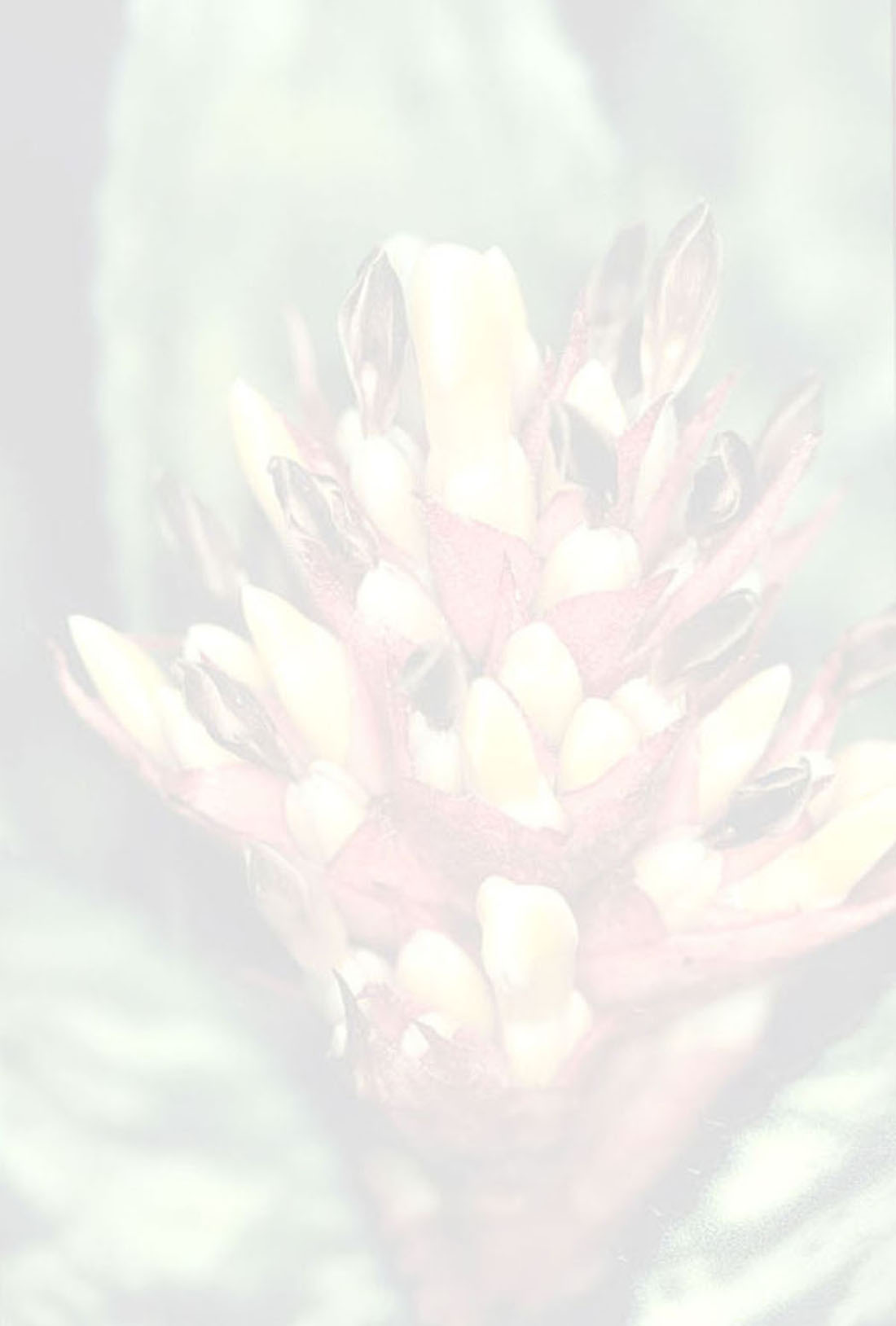

 Aechmea altocaririensis Leme & L.Kollmann[as Aechmea altocaririensis Leme & L.Kollmann]
Aechmea altocaririensis Leme & L.Kollmann[as Aechmea altocaririensis Leme & L.Kollmann]Diagnose: —Ab Aechmea subintegerrima, cui affinis, laminis foliorum latioribus apice nigrescentibus, floribus minoribus et sepalis virido-flavescentibus brevioribusque differt; a Aechmea andersoniana, cui similis, laminis foliorum latioribus apice nigrescentibus, inflorescentia longiora, floribus minoribus et petalis apicem versus lilacinis acuminatisque recedit. Observations: —Observations: Aechmea altocaririensis is a member of the A. lingulata complex, being closely related to A. subintegerrima (Philcox) Leme. The morphological differences when compared to that species are: wider leaf blades (2.0–3.2 cm vs. ca. 1.2 cm wide) with blackish apices (vs. apex color not distinct from the color of the rest of the blades), smaller flowers (15–16 mm vs. ca. 20 mm long) and sepals yellowish-green (vs. purple) that are shorter (6–7 mm vs. ca. 9 mm long). Using the identification key provided by Leme & Siqueira-Filho (2006) for the species in the A. lingulata complex, this new species keys out as A. andersoniana Leme & Luther (2003: 3), but it differs from it by the broader leaf blades (2.0-3.2 cm vs. 1.4–1.7 cm wide) with blackish apices (vs. apex color not distinct from the rest of the blades), longer inflorescences (12–16 cm vs. 5.5–7.0 cm long) with smaller flowers (15–16 mm vs. ca. 20 mm long), and by the petal being lilac (vs. white) with an acuminate apex (vs. apex acute to subacute).Edited from (27-03-2017): Leme & Kollmann 2011. (protologue) New species and a new combination of Brazilian Bromeliaceae. .